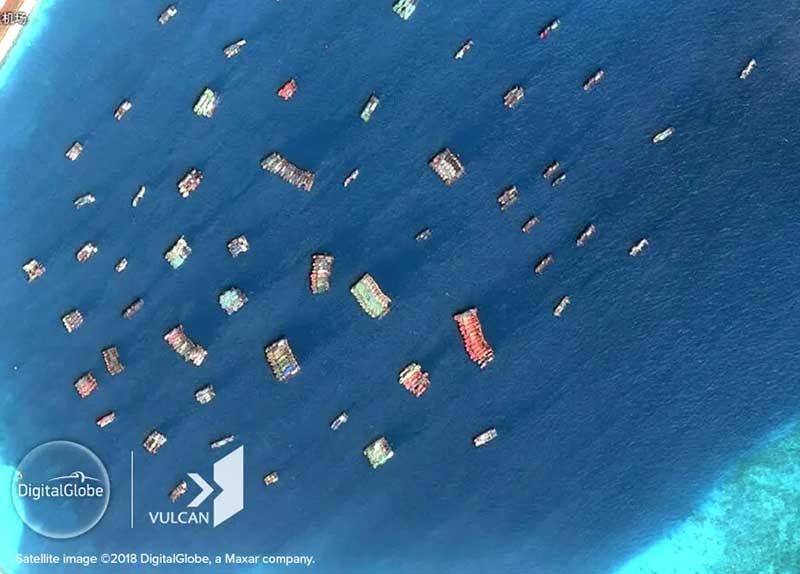Satellite images show surge of China ships in West Philippine Sea

MANILA, Philippines — Satellite, radar and infrared images taken over a span of six months last year showed an alarming increase of fishing vessels – mostly Chinese – in the West Philippine Sea that not only have further degraded marine resources in the area but also increased risks of armed conflict in the disputed waters, a security expert has warned.
Gregory Poling of the Asia Maritime Transparency Initiative in his article published in the AMTI website last Jan. 9 analyzed the results of the six-month collaboration between the Center for Strategic and International Studies (CSIS) and Vulcan Inc.’s Skylight Maritime Initiative.
The project involved tracking movements of fishing vessels through Automatic Identification System (AIS), Visible Infrared Imaging Radiometer Suite (VIIRS) and Synthetic Aperture Radar (SAR) in the South China Sea.
The results, he said, “tell a worrying story about the scale of unseen fishing activity in the region, massive overcapacity in the Spratlys, especially on the Chinese side, and the stunning scale and expense of the maritime militia.”
“The fisheries and fishers of the South China Sea warrant much more attention. The disputes over the islands, reefs and waters in the area have made effective fisheries management impossible, even as a calamitous stock collapse threatens livelihoods around the region,” Poling said.
“Meanwhile, a different kind of fishing fleet, one engaged in paramilitary work on behalf of the state rather than the commercial enterprise of fishing, has emerged as the largest force in the Spratlys,” he said.
“The numbers of militia vessels operating in the area on behalf of China is much larger and more persistent than is generally understood,” he added.
The phenomenon of the so-called “maritime militia” was raised a few years ago after hundreds of Chinese fishing vessels monitored in the West Philippine Sea and other disputed portions of the South China Sea were suspected to be not fishing at all but actually resupplying Beijing military installations in the area and acting as another force to enforce its territorial claims.
“Experts and policymakers focused on the South China Sea will need to devote a proportionate amount of their attention to these actors and the role they play in the area,” Poling said.
Tools like VIIRS – which light sources at sea – and SAR, which detect anything metallic like hulls and ships, show the number of fishing vessels operating in the disputed Spratlys is exponentially higher than AIS transmissions suggest, he said, referring to the radio transponders that fishing vessels are required to have and turn on to be tracked.
He said improving the monitoring of these fleets would be critical if the claimants hope to save South China Sea fisheries resources and reduce the frequency of uncalled for incidents between vessels.
“As they race to pull the last fish from the South China Sea, fishers stand at least as much chance of triggering a violent clash as do the region’s armed forces. And that has become even more likely as a significant number of fishing vessels in the area forgo fishing full-time to serve as a direct arm of the state through official maritime militia,” Poling said.
He did not mention the duration of the project but he cited an image taken as late as October last year.
SAR and VIIRS data suggest very little activity occuring around reefs in the southeastern portion of the Spratlys occupied by Malaysia as well as unoccupied areas near the coast of Palawan, he said. – With Pia Lee-Brago
Related video:
- Latest
- Trending





























